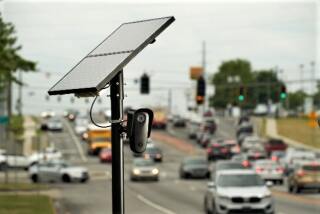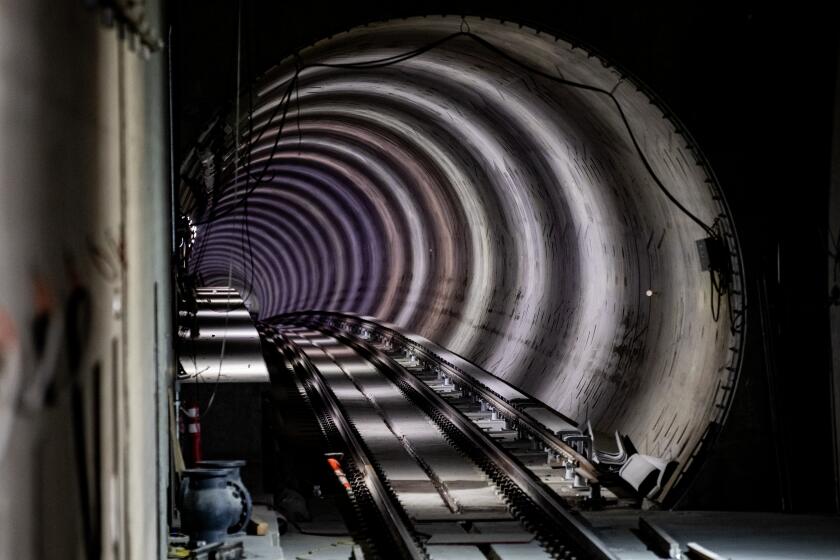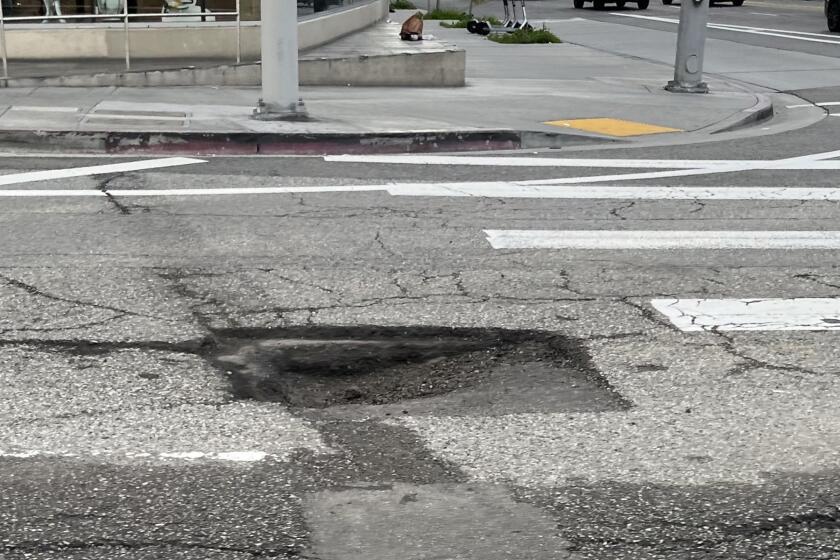Official Is Banking on Machine to Ease Traffic Ticket Snarl
- Share via
Have you ever received a traffic ticket? Have you ever hunted fruitlessly for a parking spot outside the Clairemont Mesa traffic facility? Have you ever waited in line there for three, maybe four hours just to--whoopee!--pay a fine or sign up for traffic school?
If so, Kent Pedersen has news for you. He’s got a plan to make that whole process painless. Well, less painful at least.
Pedersen is San Diego’s Municipal Court administrator, and for some time now he’s been bothered by reports that taking care of even the most minor traffic infraction can be a terribly aggravating and time-consuming ordeal.
Got an Idea
So Pedersen got this idea: Why not apply the automated teller type technology widely used by the banking industry to the county’s sprawling traffic court? Why not deploy mechanized units--let’s call them Automatic Ticket Eaters, or ATEs for short--at traffic facilities, other county buildings, perhaps even at shopping malls?
“The technology is certainly available, so all we’d need to do is revise it to our own needs,” Pedersen said. “I think it’s a great way to allow people to take care of these matters during off hours and eliminate a lot of the inconvenience they face in dealing with the courts.”
As Pedersen sees it, the ATE could serve any number of typical traffic violators, whose citation might be equipped with an identifying bar code such as those used by supermarkets, that the machine could scan.
Checks Would Be OK
For those seeking bail information, the unit could cough up a readout. Registration for traffic school could also be accommodated. And those paying by check for their misdeeds could pop it right in the ATE’s mouth.
“The possibilities are really limitless,” said Pedersen, who came up with the idea at a brainstorming session with his staff earlier this year. “The simplicity of these machines is really amazing. And to think that just 10 years ago we all scoffed at the concept.”
At this point, plans for the ATE are just taking shape. There is no prototype yet, but Pedersen has discussed his vision with municipal judges and administrators of outlying courts, and all seem enthusiastic about it.
Backing From Judge
The presiding judge of San Diego Municipal Court, H. Ronald Domnitz, called the ATE a “wonderful idea.
“We handle over 300,000 traffic infractions a year, and with the ever-increasing caseload comes an inconvenience to the public,” Domnitz said. “We realize people sometimes have to wait two or three hours in line to merely post bail or request traffic school. With the current budget constraints, we are unable to provide additional clerks. And, since the technology is available to expedite the process by using computerized depots, we fully support the project.”
Besides the convenience ATE offers motorists, there is a benefit for county government, namely, monetary savings.
Savings Seen
Although Pedersen hasn’t worked up a cost estimate for the units, he is convinced that, in the long run, a fleet of ATEs would put far less stress on the county budget than their paycheck-hungry human counterparts.
“There’s no doubt that it’s far more expensive for us to provide people to walk through these issues than to pay a one-time expense, amortized over a number of years, for a machine that can easily perform certain services,” Pedersen said.
Court officials say the primary obstacle to moving forward with the ATE project is funding. Pedersen has a staff member searching for grants that might help. Another possible source is a pool of state funds for trial courts that San Diego will receive if voters approve Proposition A--the so-called Gann waiver--on Tuesday.
Hopes to Start in ’89
If he can muster some financial support, Pedersen said, he would like to begin installing the ATEs in late 1989. At first they would be put at traffic facilities, the County Administration Building and other public buildings. Eventually, court officials say, they would like to lease space and place the depots at commercial centers throughout the county.
“Obviously we can’t eliminate everyone’s requirement to appear in court,” Pedersen said. “But we’d like to reduce these long delays they experience, and we feel this is a means for cutting at least some of the frustration they face. Because, no matter how good our service is, this is not a happy environment for people to be in.”
While plans for ATE simmer, Pedersen is contemplating other ways to ease the aggravation for those with traffic citations. Beginning in early 1989, he hopes to have funds to hire the extra staff to enable all Municipal Court facilities to extend their hours. Under his proposal, buildings now open from 8 a.m. to 4 p.m. would open an hour earlier and close an hour later.
Less Court Intrusion
Pedersen hopes the new schedule will enable many people to take care of traffic matters before or after work, reducing the court’s intrusion on their day. The longer hours also should eliminate the traffic woes that plague the Clairemont Mesa facility at peak periods.
The Municipal Court administrator, who acknowledges that he has no background in computers but enjoys applying technology to the court system, sees other areas that are fertile for automation. One likely to appeal to the legal community would allow attorneys to view files in the central court computer from their personal office computers.
“I’d like to allow them to be able to pull up a file to monitor what’s happening to a given case, particularly in the civil area, and even make a print-out,” Pedersen said. “That would eliminate the need for a trip to the courthouse.”
More to Read
Sign up for Essential California
The most important California stories and recommendations in your inbox every morning.
You may occasionally receive promotional content from the Los Angeles Times.










